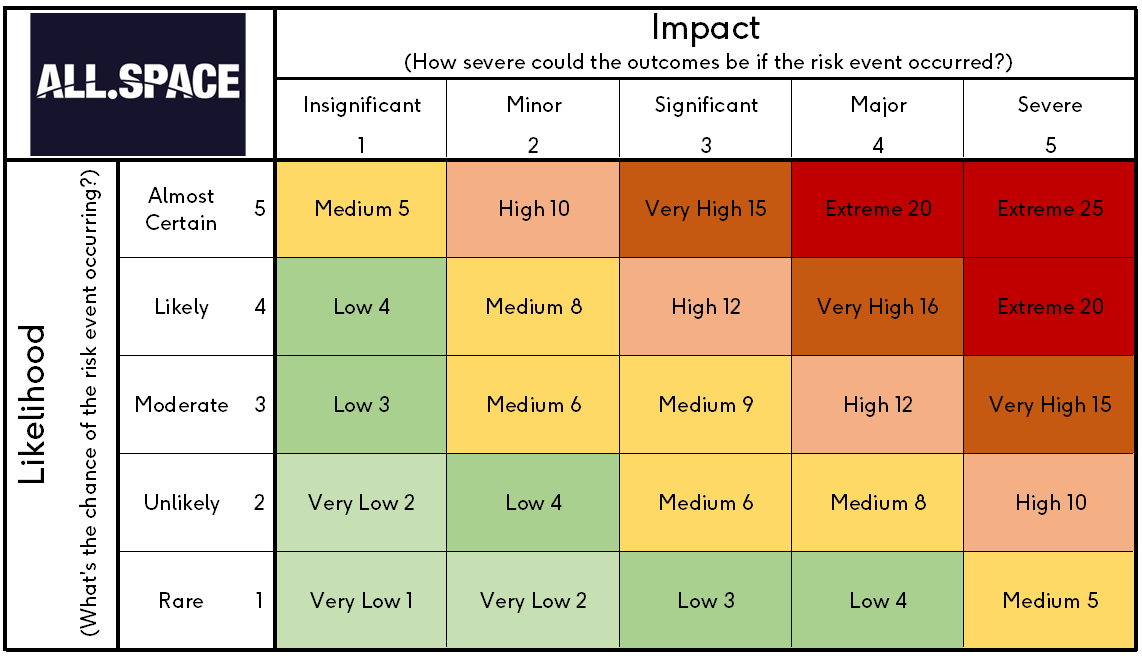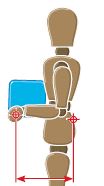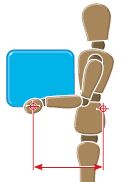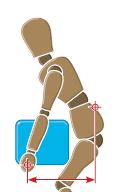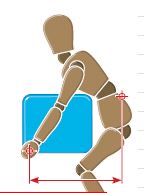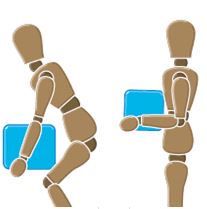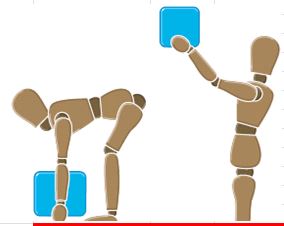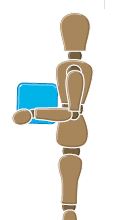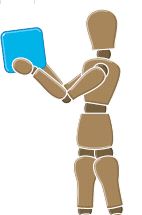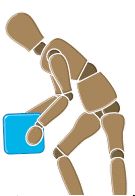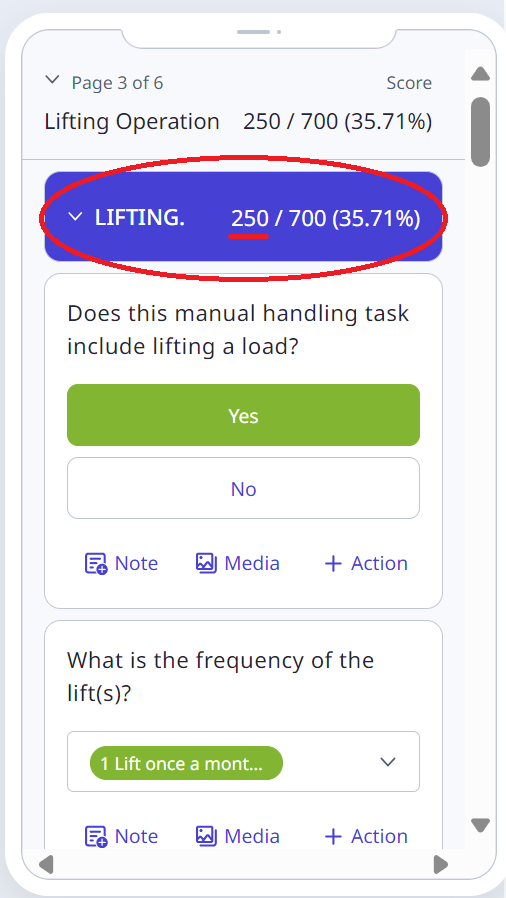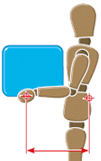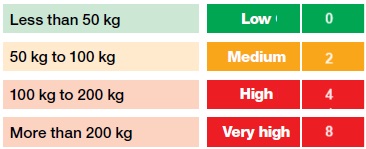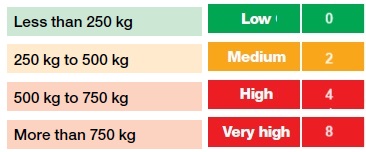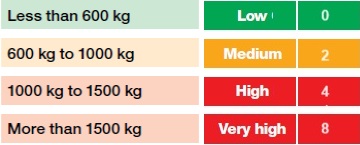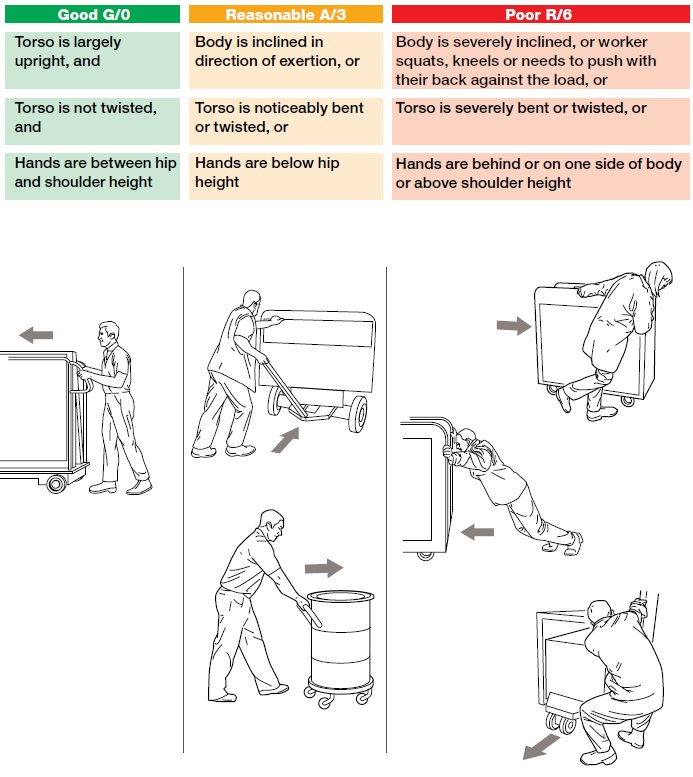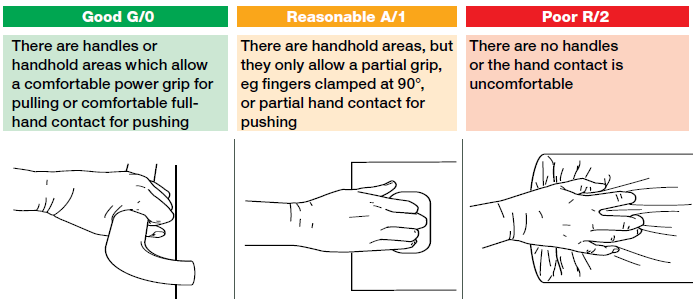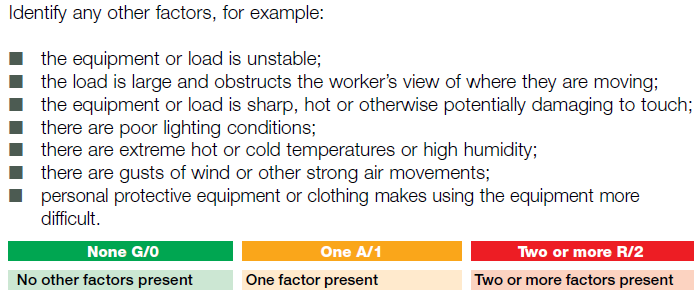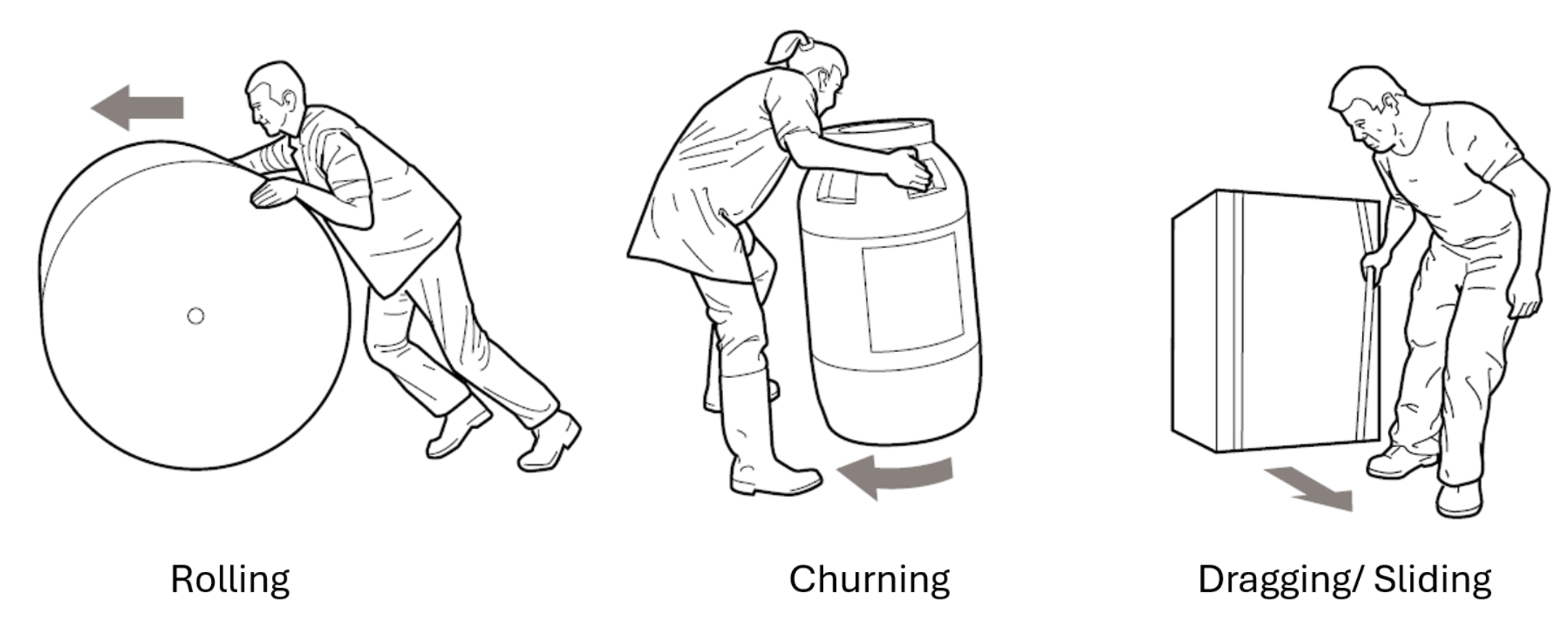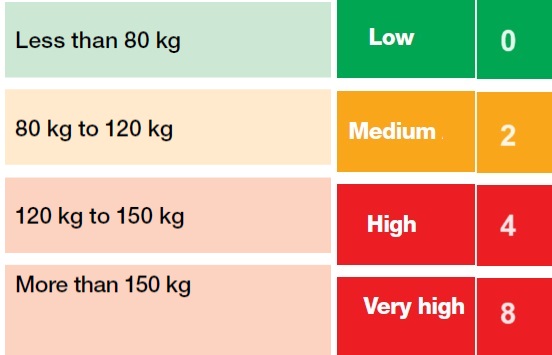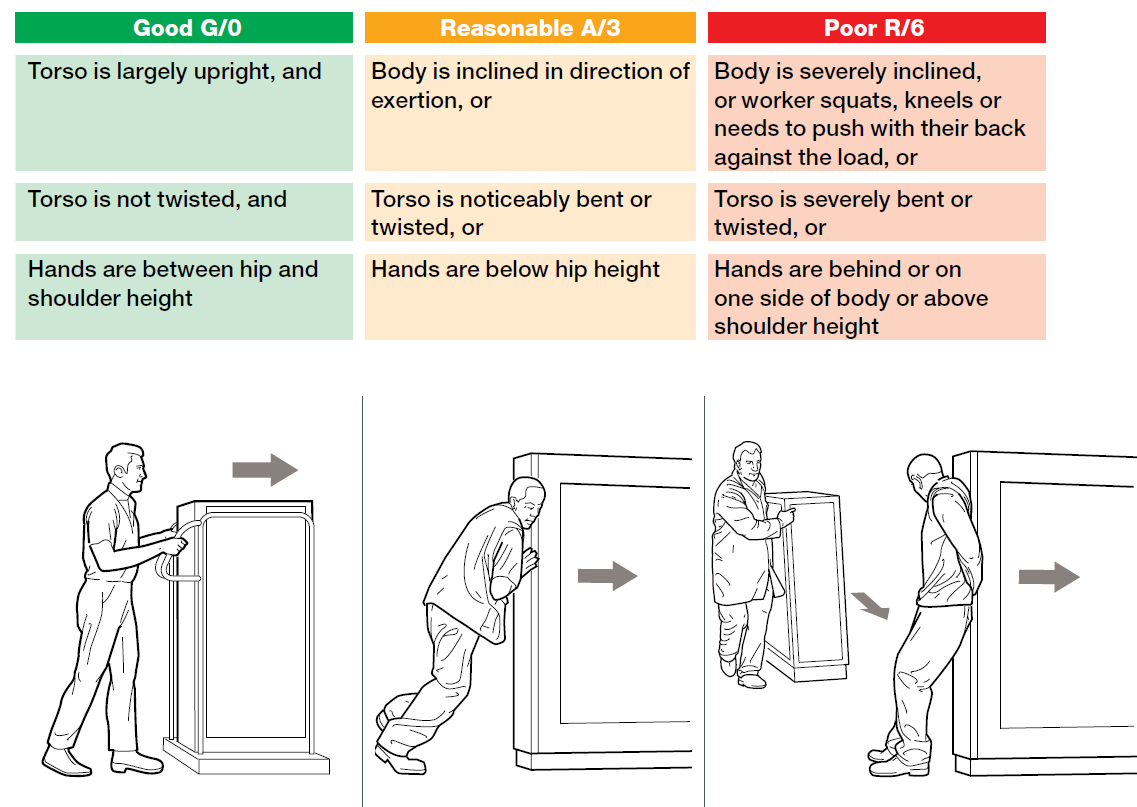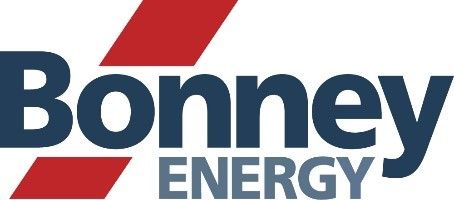Title Page
-
Site conducted
-
Conducted on
-
Review Date
-
Prepared by
-
Summary of the task
-
Version number
-
Purpose of new version
- general review (2 years since last review)
- Due to an accident
- Due to change in process
- Risk assessment no longer suitable
-
Add detailed description of review
Overall (estimation) Risk Rating on Completion of the Manual Handling Risk assessment
-
What is the likelihood of an incident occurring? (1= rare, 2 = unlikely, 3 = moderate, 4 = likely, 5 = almost certain)
-
What would be the impact of the incident? (1= insignificant, 2 = minor, 3 = moderate, 4 = significant, 5 = severe)
-
Experimental Risk number is:
-
Estimation Risk Rating is:
-
The overall (estimated) risk rating for this manual handling task is Very Low
-
The overall (estimated) risk rating for this manual handling task is Low
-
The overall (estimated) risk rating for this manual handling task is Medium
-
An action should be raised to reduce the risk rating for this hazard by implementing an improved control measure
-
The overall (estimated) risk rating for this manual handling task is High
-
The overall (estimated) risk rating for this manual handling task is Very High
-
The overall (estimated) risk rating for this manual handling task is Extreme and the task should not be executed before introducing mitigating controls to reduce the risk.
-
Use the Risk Matrix to determine the risk rating for this hazard
Task and Load
-
What are the details of the manual handling task being carried
-
What are the dimensions of the load?
-
What is the weight of the load?
-
This MUST NOT be lifted or moved by an induvial unless a mechanical aid is used. For example a pallet truck (continue to Pushing and Pulling Assessment Page)
-
Depending on the dimensions of the load consider a team lift or using a mechanical aid, such as a pallet truck
Indications that the operation could be high risk
-
Does the operation have a history of incidents/ accidents?
-
Is the operation known to be hard or high-risk work?
-
Do employees doing the work show signs that they are finding it hard (eg breathing heavily, red-faced, sweating)?
-
During discussions with employees doing the operation indicate that some aspects are difficult?
Lifting Operation
LIFTING.
-
Does this manual handling task include lifting a load?
-
What is the weight of the individual load?
- <10kg
- 10-19kg
- 20-29kg
- 30-39kg
- 40-49kg
- >50kg
-
What is the frequency of the lift(s)?
- 1 Lift Every minute
- 1 Lift Every 15 minutes
- 1 Lift Every 30 minutes
- 1 Lift Every Hour
- 1 Lift twice a day
- 1 Lift once a day
- 1 Lift once a week
- 1 Lift once a month (or more)
-
What is the hand distance from lower back?
- 1. Close, Upper arms aligned vertically and upright torso
- 2. Moderate, Upper arms angled away from body.
- 3. Moderate, Torso bent forward
- 4. Far, upper arms angled away from body and torso bent forward.
-
1. Close: Upper arms aligned vertically and upright torso
-
2. Moderate: Upper arms angled away from body.
-
3. Moderate: Torso bent forward
-
4. Far: Upper arms angled away from body and torso bent forward.
-
What is the vertical lift position?
- 1. Above knee and /or below elbow height.
- 2. Below knee and / or above elbow height.
- 3. Floor level or below or Above head height.
-
1. Above knee and/or below elbow height.
-
2. Below knee and/or above elbow height.
-
3. Floor level or below / Above head height
-
Is there any torso twisting and/ or sideways bending?
- 1. Little or no torso twisting or sideways bending.
- 2. Torso twisting or sideways bending.
- 3. Torso twisting and sideways bending.
-
1. Little or no torso twisting or sideways bending
-
2. Torso twisting or sideways bending
-
3. Torso twisting and sideways bending
-
Are there any postural constraints?
- No postural constraints
- Limited space with restricted posture
- Severely limited space and severely restricted posture
-
What is the load grip?
- Good grip, Item with well designed handles, fit for purpose, Loose parts enabling good grip
- Item with poor handles or handholds, fingers to be clamped at 90 degrees under the item.
- Item with poor design, loose parts, irregular objects, bulky or difficult to handle. Non-regid sacks or unprediccated loads
-
What is the type of the floor surface?
- Dry/clean floor in good condition
- Dry floor but in poor condition, worn or uneven
- Contaminated/wet or steep sloping floor or unstable surface or unsuitable footwear
-
Are there environmental factors present? For example, extremes of temperature, strong air movements, extreme lighting
-
What environmental factors are present?
- Extreme Temperature: Hot
- Extreme Temperature: Cold
- Strong air movements
- Extreme Lighting: Dark
- Extreme Lighting: Bright
- Outdoor: Rain
- Outdoor: Snow
- Outdoor: Strong Sun
- Outdoor: Strong Wind
- Other
-
What other environmental factors are present?
Lifting Risk Rating
-
L1 - What is the number out of 700 (recorded at the top of this) page?
-
The risk rating for this lifting task is Low
-
The overall risk rating for this lifting task is Extreme and the task should not progress until this hazard has been mitigated
-
The overall risk rating for this lifting task is Medium
-
The overall risk rating for this lifting task is High
-
The overall risk rating for this lifting task is Very High
-
An action should be raised to mitigate and reduce the risk rating of this task
-
This is an incorrect entry - please check the number out of 700 at the top of this page
-
This is an incorrect entry - please check the number out of 700 at the top of this page
Carrying Operation
CARRYING
-
Does this manual handling task include moving the load from one point to another?
-
Which location is the task being carried out?
-
Draw the carrying route on this map
-
Do not use the stairs to carry loads - please use the passenger lift.
-
Draw the carrying route on this map
-
Please describe the route in Notes, upload a carrying plan or video of the route in Media
-
What is the carrying frequency?
- Carrying an item every 15 minutes
- Carrying an item every 30 minutes
- Carrying an item every hour
- Carrying an item every day
- Carrying an item every week
- Carrying an item once per month (or more)
-
What is the hand distance from lower back?
- Close: Upper arms aligned vertically and upright torso.
- Moderate: Upper arms angled away from body.
- Moderate: Torso bent forward.
- Far: Upper arms angled away from body and torso bent forward
-
Close: Upper arms aligned vertically and upright torso.
-
Moderate: Upper arms angled away form body.
-
Moderate: Torso bent forward
-
Far: upper arms angled away form body and torso bent forward
-
What is the asymmetrical torso/load?
- Load and hands symmetrical in front of item.
- Load and hand asymmetrical, upright body position.
- One handed carrying to the side
-
Load and hands symmetrical in front of item.
-
Load and hands asymmetrical, upright body position.
-
One handed carrying to the side.
-
What is the carrying distance?
-
What is the floor surface type along the route?
- Dry/clean floor in good condition
- Dry floor but in poor condition, worn or uneven
- Contaminated/wet or steep sloping floor or unstable surface or unsuitable footwear
-
Are there other environmental factors present? For example, extremes of temperature, strong air movements, extreme lighting
-
What environmental factors are present?
- Extreme Temperature: Hot
- Extreme Temperature: Cold
- Strong air movements
- Extreme Lighting: Dark
- Extreme Lighting: Bright
- Outdoor: Rain
- Outdoor: Snow
- Outdoor: Strong Sun
- Outdoor: Strong Wind
- Other
-
What other environmental factors are present?
-
Are there any obstacles on route?
-
What obstacles are on the route?
- Doorways/ gates
- Slopes
- Stairs / steps
- Blind/ sharp corners
- Changes in surface type
- Uneven surfaces
- Other
-
What other obstacles are on the route?
Carrying Risk Rating
-
C1 - What is the number out of 700 (recorded at the top of this) page?
-
The risk rating for this lifting task is Low
-
The overall risk rating for this lifting task is Extreme and the task should not progress until this hazard has been mitigated
-
The overall risk rating for this lifting task is Medium
-
The overall risk rating for this lifting task is High
-
The overall risk rating for this lifting task is Very High
-
An action should be raised to mitigate and reduce the risk rating of this task
-
This is an incorrect entry - please check the number out of 700 at the top of this page
-
This is an incorrect entry - please check the number out of 700 at the top of this page
Pushing/ Pulling Operation
-
Does this manual handling task include pushing or pulling a load?
-
Does the load have (or is on) wheels or no wheels?
-
What type of equipment is being used?
- small with one or two wheels, e.g. sack trolley.
- medium with three or more fixed wheels and/or castors, e.g build jig.
- large, steerable or running on rails, e.g pallet truck, Big Red, terminal stack trolleys.
-
-
-
-
What is the weight of the load (Low = 0, Medium = 2, High = 4, Very High = 8)?
-
If the load exceeds the equipment’s rated capacity (manufacturer’s recommended maximum weight), different equipment MUST be used.
-
What is the standard of posture during the task (Good = 0, Reasonable = 3, Poor = 6)?
-
-
What is the standard of hand grip during the task (Good = 0, Reasonable = 1, Poor = 2)?
-
-
What is the work pattern of the task (Good = 0, Reasonable = 1, Poor = 3)?
-
-
What is the travel distance of the task (Short = 0, Medium = 1, Long = 3)?
-
-
What is the condition of the equipment used in the task (Good = 0, Reasonable = 2, Poor = 4)?
-
-
What is the standard of the floor surface (Good = 0, Reasonable = 1, Poor = 4)?
-
-
Are there obstacles during the route (Good = 0, Reasonable = 2, Poor = 3)?
-
-
Are there any other factors to consider?
- the equipment or load is unstable
- the load is large and obstructs the worker’s view of where they are moving
- the equipment or load is sharp, hot or otherwise potentially damaging to touch
- there are poor lighting conditions
- there are extreme hot or cold temperatures or high humidity
- there are gusts of wind or other strong air movements
- personal protective equipment or clothing makes using the equipment more difficult
- Other
-
Please specify other factor that requires consideration
-
How many additional factors are there to consider (None = 0, One = 1, Two or more = 2)?
-
-
The overall risk rating for this Pulling/ Pushing (with wheels) task
-
The overall risk rating for this Pulling/ Pushing (with wheels) task is Very High
-
The overall risk rating for this Pulling/ Pushing (with wheels) task is Very Low
-
The overall risk rating for this Pulling/ Pushing (with wheels) task is Extreme and the task should not progress until this hazard has been mitigated
-
The overall risk rating for this Pulling/ Pushing (with wheels) task is High
-
The overall risk rating for this Pulling/ Pushing (with wheels) task is Medium
-
The overall risk rating for this Pulling/ Pushing (with wheels) task is Low
-
An action should be raised to reduce the risk rating for this hazard by implementing an improved control measure
-
-
What type of technique is being used?
-
-
-
-
a1 What is the weight of the load (Low = 0, Medium = 2, High = 4, Very High = 8)?
-
a2 What is the standard of posture during the task (Good = 0, Reasonable = 3, Poor = 6)?
-
-
a3 What is the standard of hand grip during the task (Good = 0, Reasonable = 1, Poor = 2)?
-
-
a4 What is the work pattern of the task (Good = 0, Reasonable = 1, Poor = 3)?
-
-
a5 What is the travel distance of the task (Short = 0, Medium = 1, Long = 3)?
-
-
a7 What is the standard of the floor surface (Good = 0, Reasonable = 1, Poor = 4)?
-
-
a8 Are there obstacles during the route (Good = 0, Reasonable = 2, Poor = 3)?
-
-
Are there any other factors to consider?
- the equipment or load is unstable
- the load is large and obstructs the worker’s view of where they are moving
- the equipment or load is sharp, hot or otherwise potentially damaging to touch
- there are poor lighting conditions
- there are extreme hot or cold temperatures or high humidity
- there are gusts of wind or other strong air movements
- personal protective equipment or clothing makes using the equipment more difficult
- Other
-
Please specify other factor that requires consideration
-
a9 How many additional factors are there to consider (None = 0, One = 1, Two or more = 2)?
-
-
The overall risk rating for this Pulling/ Pushing (without wheels) task
-
The overall risk rating for this Pulling/ Pushing (with wheels) task is Very High
-
The overall risk rating for this Pulling/ Pushing (with wheels) task is Very Low
-
The overall risk rating for this Pulling/ Pushing (with wheels) task is Extreme and the task should not progress until this hazard has been mitigated
-
The overall risk rating for this Pulling/ Pushing (with wheels) task is High
-
The overall risk rating for this Pulling/ Pushing (with wheels) task is Medium
-
The overall risk rating for this Pulling/ Pushing (with wheels) task is Low
-
An action should be raised to reduce the risk rating for this hazard by implementing an improved control measure
Sign Off
COMPLETION
-
Have considerations been made to eliminate this manual handling task by using lifting aids, automation etc?
-
Raise an action to consider opportunities to eliminate this manual handling task
-
Name and signature of inspector
-
This document must now be shared with the colleagues who are involved with this manual handling task.












